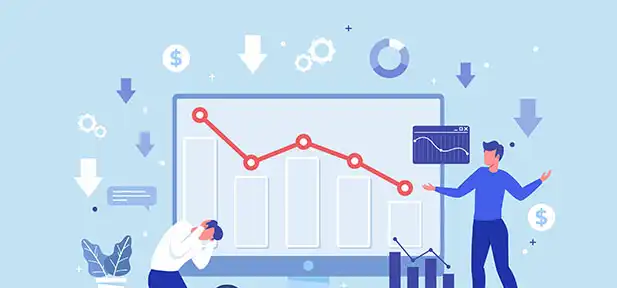Fixing Low-Traffic Pages
Low-traffic pages on your website can seriously impair its overall performance and visibility in the modern digital environment, Improving user engagement and raising your site’s search engine results depend on you fixing these low-traffic pages. This post explores doable tactics for improving underperforming content and increasing traffic.

Comprehending Pages with Low Traffic
Understanding what defines a low-traffic page is crucial before moving on to the improvements. These are the parts of your website that get little traffic usually because of bad SEO, and pointless content. The first step in fixing the issue is locating these pages.
Make a Content Audit
A content audit facilitates the identification of underperforming pages. Track page views, bounce rates and average time on page with tools like Google Analytics. Make a list of the pages with little traffic that want improvement.
Make SEO-friendly
Research on Keywords
Find high-traffic keywords that are relevant by conducting in-depth keyword research. Good search volume and low-competition keywords can be found with the aid of tools such as Ahrefs SEMrush and Google Keyword Planner, fixing low traffic pages.
Page-Level SEO
By adding your target keywords to the title meta descriptions, headers, and body of the article you can improve on-page SEO. Make sure your information is organized properly, with distinct headers and subheadings.
Internal Connection
Boost internal linking to increase traffic to pages with less traffic. To spread link equity and increase the visibility of failing pages, link from high-performing pages to those that perform poorly.
Boost the caliber of the content
Revise Outdated Data
Update and revise out-of-date material to make sure it’s correct and relevant. Both user engagement and search engine rankings may benefit from this.
Improve Your Ability to Read
Use bullet points, illustrations, and short paragraphs to make your information easy to read. Good readability may keep consumers interested and reduce bounce rates.
Incorporate Video
To make your information more interesting, include infographics, videos, and pictures. Adding multimedia to your page might draw in more visitors and entice them to stay longer.
Technical Solutions for SEO
Boost the speed at which pages load
The speed of page load is important for both SEO and user experience. Utilize resources like as Google PageSpeed Insights to pinpoint and resolve problems causing your pages to load more slowly.
Optimizing for Mobile
Make sure that your website is mobile-friendly in its entirety. A mobile-friendly website is essential for attracting and keeping visitors, as mobile users account for a large percentage of online traffic.
Mend Broken Links
SEO and user experience can both be badly impacted by broken links. To guarantee easy navigation, regularly inspect your website for broken links and fix them.
Utilize Social Media
Distribute and Encourage
To improve visibility, use social media to promote your low-traffic pages. Post interesting images and snippets to encourage clicks and shares.
Interact with the People in Your Audience
Interact with your readers by leaving comments and promoting conversation. This might broaden the audience for your content and improve website traffic.
Make Use of Email Marketing
Forward Newsletters
Your email newsletters should contain links to your low-traffic pages. Your underperforming content can receive a lot of visitors via a well-designed email campaign.
Particularized Suggestions
Provide your subscribers with tailored content recommendations based on their preferences. This focused strategy can aid in directing visitors to particular pages.
Examine and Modify
Track Performance
Use analytics tools to track the effectiveness of your low-traffic pages over time. Monitor data such as page views, bounce rates, and conversion rates to evaluate how well your changes are working.
Adjust Techniques
Remain adaptable and prepared to modify your tactics in light of the information you gather. Try a different strategy if the current one isn’t producing the desired outcomes.
In summary
Rebuilding low-traffic pages is a continuous process that calls for a blend of technical advancements, SEO, high-quality content, and marketing initiatives. You may improve the performance of your underperforming pages and increase website traffic by methodically addressing these areas. To guarantee continued growth and increased internet visibility, put these strategies into practice and keep an eye on your success.
Subscribe to our newsletter
& plug into
the world of technology





